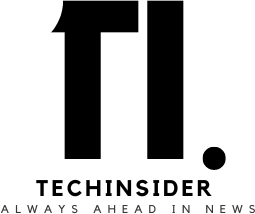Graphical abstract. Credit: Computers in Biology and Medicine (2024). DOI: 10.1016/j.compbiomed.2024.109144
A new study by researchers from Regenstrief Institute, Indiana University and Purdue University presents their low cost, scalable methodology for the early identification of individuals at risk of developing dementia. While the condition remains incurable, there are a number of common risk factors that, if targeted and addressed, can potentially reduce the odds of developing dementia or slow the pace of cognitive decline.
“Detection of dementia risk is important for appropriate care management and planning,” said study senior author Malaz Boustani, M.D., MPH., of Regenstrief Institute and IU School of Medicine. “We wanted to solve the problem of identifying individuals early on who are likely to develop dementia with a solution that is both scalable and cost effective for the health care system.
“To do this, we use existing information—passive data—already in the patient’s medical notes for what we call zero-minute assessment at less than a dollar cost. Decision-focused content selection methodology is used to develop an individualized dementia risk prediction or to demonstrate evidence of mild cognitive impairment.”
“Dementia risk prediction using decision-focused content selection from medical notes” is published in Computers in Biology and Medicine.
This technique utilizes machine learning to select a subset of phrases or sentences from the medical notes in a patient’s electronic health record (EHR) written by a doctor, a nurse, a social worker or other provider that are relevant to the target outcome over a defined observation period. Medical notes are narratives in an EHR that describe the health of the patient in free text format.
Information selected for extraction from the medical notes to predict dementia risk might include clinician comments, patient remarks, blood pressure or cholesterol values over time, observations of mental status by a family member or a medication history—including prescription and over-the-counter drugs as well as “natural” remedies and supplements.
Predicting dementia risk helps the patient, the family and health care providers access resources such as support groups and the Centers for Medicare and Medicaid GUIDE model program, which supports keeping individuals in their homes longer.
It could also encourage clinician deprescribing of medications commonly taken by older adults but known to negatively affect the brain as well as conversations with the patient about over-the-counter drugs with similar characteristics. Knowing dementia risk might prompt physician consideration of newly FDA approved amyloid-lowering therapies which alter the trajectory of Alzheimer’s disease.
“Our methodology combines both supervised and unsupervised machine learning in order to extract sentences which are relevant to dementia from the large amount of medical notes readily available for each patient,” said study co-author Zina Ben Miled, Ph.D., M.S., a Regenstrief Institute affiliate scientist and a former Purdue University in Indianapolis faculty member.
“In addition to improving predictive accuracy, this allows the health provider to quickly confirm cognitive impairment by reviewing the specific text used to drive the risk assessment by our language model.”
“Regenstrief Institute and Indiana University investigators have been pioneers in demonstrating the utility of electronic health records since the early 1970s. Given the enormous amount of effort by both clinicians and patients that goes into capturing EHR data, the goal must be to seek maximal clinical value from these data even beyond their central role in medical care,” said study co-author Paul Dexter, M.D., of Regenstrief and IU School of Medicine.
“By applying machine learning methods to identify patients at high risk of dementia in the future, this study provides an excellent and innovative example of the clinical value that is achievable from EHRs. The early identification of dementia will prove increasingly vital particularly as new treatments are developed.”
While the ultimate beneficiaries of the use of the new technique are patients and caregivers, providing zero-minute assessment at less than a dollar cost has a clear upside for primary care clinicians who are overburdened and often lack the time and training needed to administer specialized cognitive tests.
The study authors’ 5-year clinical trial of their risk prediction tool, being conducted in Indianapolis and Miami, is in its final year. Lessons learned from this trial will enable them to advance the utility of the dementia risk prediction framework in primary care practices. The researchers plan future work on the fusion of medical notes with other information contained in electronic health records as well as environmental data.
More information:
Shengyang Li et al, Dementia risk prediction using decision-focused content selection from medical notes, Computers in Biology and Medicine (2024). DOI: 10.1016/j.compbiomed.2024.109144
Provided by
Regenstrief Institute
Citation:
Dementia risk prediction: Zero-minute assessment at less than a dollar cost (2024, November 20)
retrieved 21 November 2024
from https://medicalxpress.com/news/2024-11-dementia-minute-dollar.html
This document is subject to copyright. Apart from any fair dealing for the purpose of private study or research, no
part may be reproduced without the written permission. The content is provided for information purposes only.





